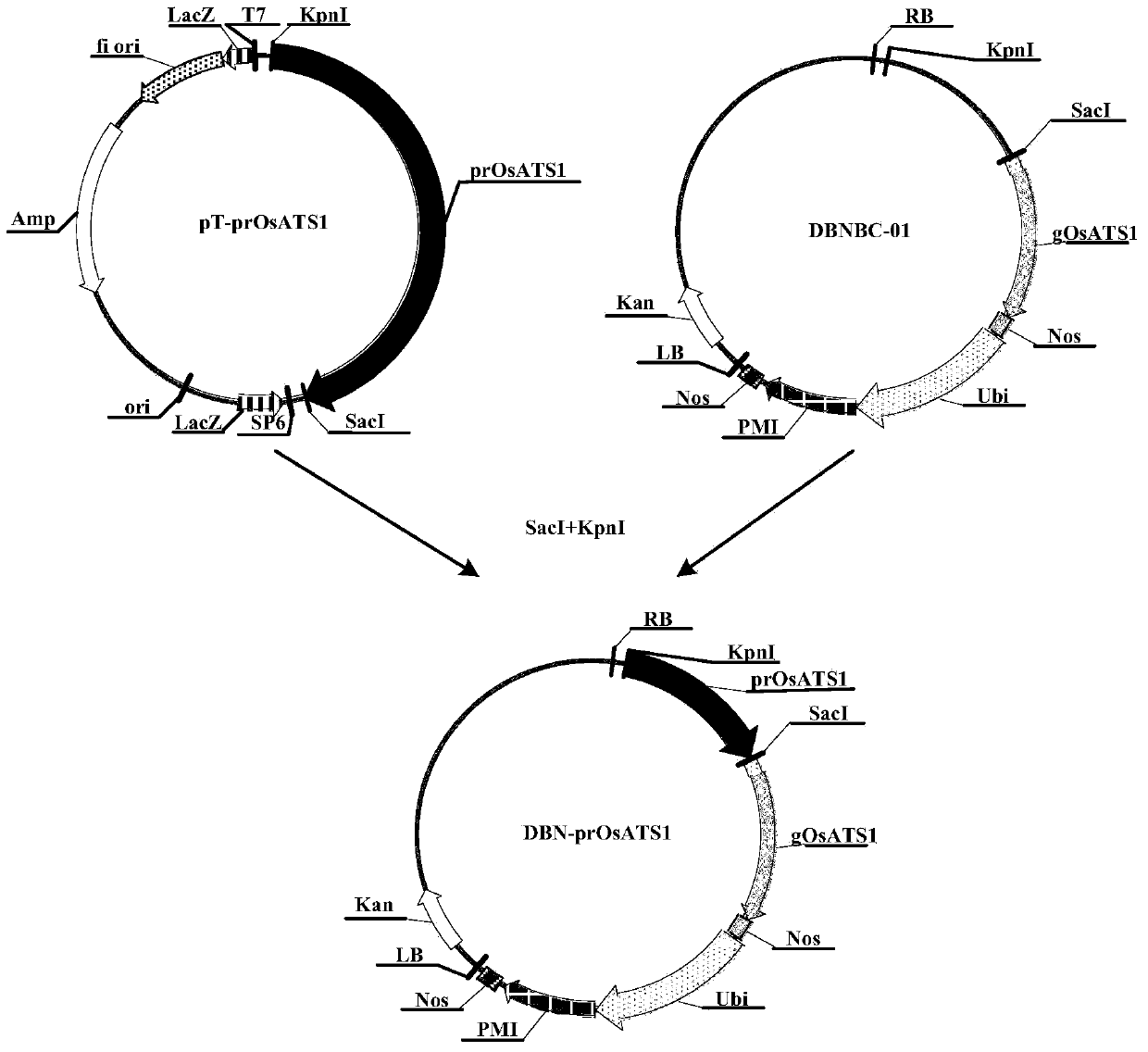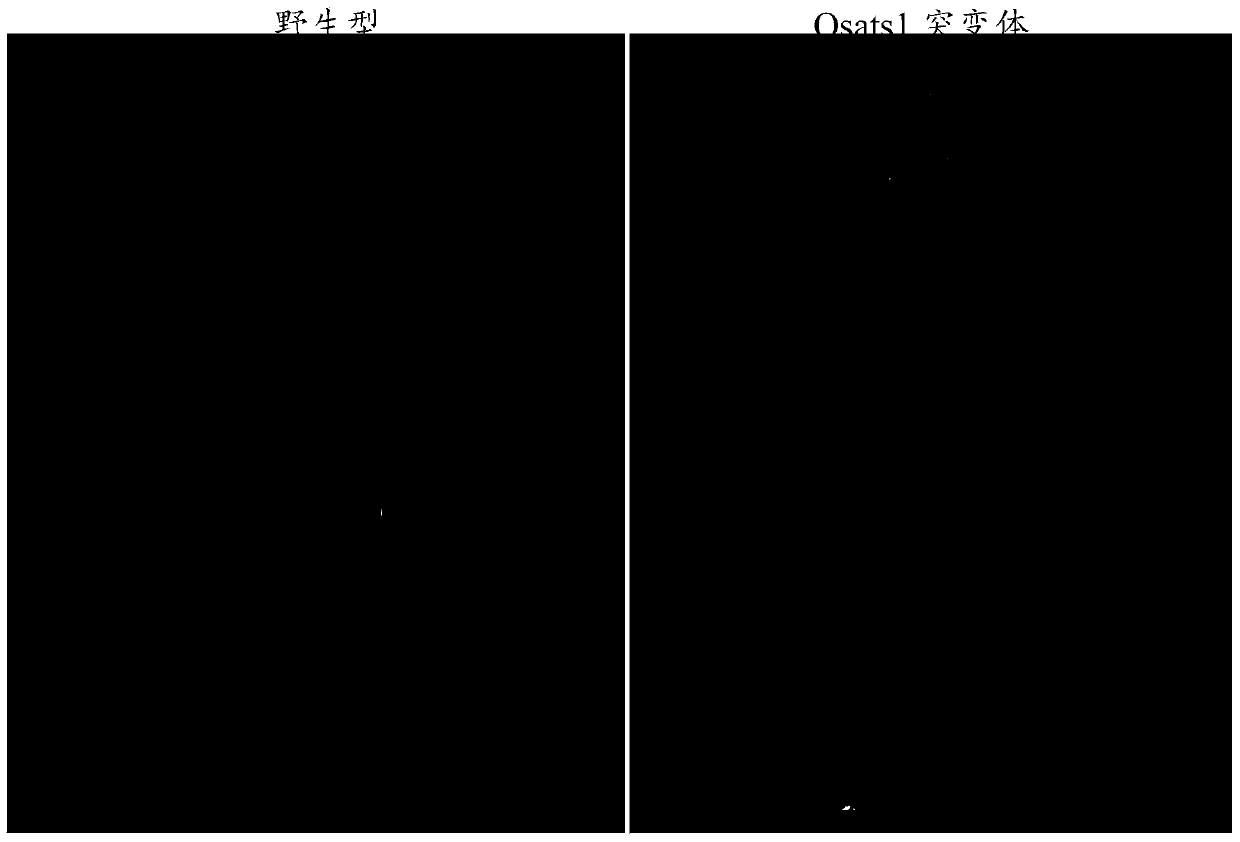Tissue-specific promoter and application thereof
A tissue-specific, promoter technology, applied in the field of indica rice ABCG15 gene promoter, can solve problems such as unresearched
- Summary
- Abstract
- Description
- Claims
- Application Information
AI Technical Summary
Problems solved by technology
Method used
Image
Examples
no. 1 example
[0067] First Example, Obtaining and Morphological Observation of Osats1 Mutant Plants
[0068] The mutant plant Osats1 (obtained by the cooperation project of Sichuan Agricultural University) is a natural mutation material identified in the process of indica hybrid breeding, and the material has no significant difference from the wild type in the vegetative growth stage of the plant ( image 3 ), but the anthers are inhibited in the early stage of development, and in the later stages of flower development, the anthers appear white and thin, and eventually fail to produce pollen, showing complete male sterility ( Figure 4 ).
no. 2 example
[0069] The second embodiment, the acquisition and analysis of the anther-specific expression promoter prOsATS1
[0070] Through fine mapping, it was found that the Osats1 mutant plant was a loss-of-function mutant caused by the deletion of 12bp in the ABCG15 gene (Loc_Os06g40550; as shown in SEQ ID NO: 2 in the sequence listing). The sequence of the mutant plant Osats1 is shown in the sequence listing as SEQ ID NO: 3.
[0071] The analysis found that there is an RNA polymerase recognition site at 2066 bp upstream of the finely positioned ABCG15 gene, as shown in SEQ ID NO: 1 in the sequence listing, named prOsATS1. This promoter is specifically expressed in anthers, especially tapetum tissue.
[0072] Through NSITE-PL online prediction, it is found that prOsATS1 (SEQ ID NO: 1) includes 5 core regulatory elements (http: / / linux1.softberry.com / berry.phtml?topic=nsitep&group=programs&subgroup=promoter), the specific information is shown in the table 1:
[0073] Table 1: Predict...
no. 3 example
[0076] The third embodiment, construction of recombinant expression vector and transformation of recombinant expression vector into Agrobacterium
[0077] 1. Construction of a recombinant cloning vector containing the prOsATS1 promoter sequence
[0078] The prOsATS1 promoter sequence was connected to the cloning vector pGEM-T (Promega, Madison, USA, CAT: A3600), and the operation steps were carried out according to the instructions of the pGEM-T vector product of Promega Company to obtain the recombinant cloning vector pT-prOsATS1. The construction process is as follows: figure 1 Shown (wherein, Amp represents the ampicillin resistance gene; f1 represents the replication origin of phage f1; LacZ is the LacZ start codon; SP6 is the promoter of SP6 RNA polymerase; T7 is the promoter of T7 RNA polymerase; prOsATS1 is the promoter of prOsATS1 sequence (SEQ ID NO: 1); MCS is the multiple cloning site).
[0079] Then, the recombinant cloning vector pT-prOsATS1 was transformed into ...
PUM
 Login to View More
Login to View More Abstract
Description
Claims
Application Information
 Login to View More
Login to View More - R&D
- Intellectual Property
- Life Sciences
- Materials
- Tech Scout
- Unparalleled Data Quality
- Higher Quality Content
- 60% Fewer Hallucinations
Browse by: Latest US Patents, China's latest patents, Technical Efficacy Thesaurus, Application Domain, Technology Topic, Popular Technical Reports.
© 2025 PatSnap. All rights reserved.Legal|Privacy policy|Modern Slavery Act Transparency Statement|Sitemap|About US| Contact US: help@patsnap.com



